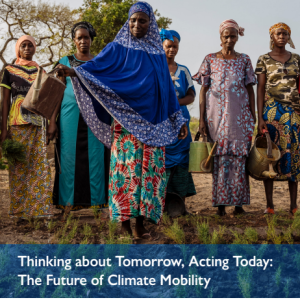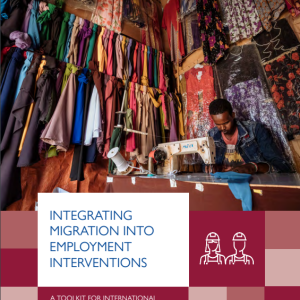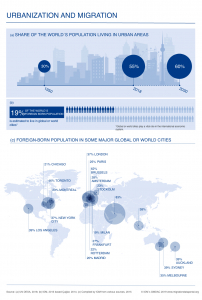Around the world there are an estimated 164 million migrant workers. This workforce carries out some of the most precarious jobs in the world. In many countries migrant workers fill essential shortages in key industries such as healthcare and manufacturing, doing jobs that are difficult, precarious and dangerous. This already puts migrant workers at higher risk of injury and death than native-born workers. Every year tens of thousands of migrants die while working abroad.
Accurate data on the occupational hazards impacting migrant workers, as well as the numbers who lose their lives while working abroad are very scarce. To address this lack of comprehensive information, a new report by the International Organization for Migration (IOM) provides an initial examination of available sources of data on migrant worker fatalities. The report also emphasizes the importance of gathering accurate data – including the wider context of fatal incidents – and reporting that data in line with international standards.
Essential roles, heightened risk
COVID-19 has exacerbated the risks faced by migrant workers. Many occupy essential roles in agriculture, hospitality, healthcare, construction and critical retail, meaning they have been less able to work remotely and more likely to be exposed to the virus. In European Union countries for example, migrant workers (and particularly those from outside the EU) are over-represented in roles such as personal care, delivery/transport and food processing which require few formal qualifications and/or have low-wages.
The health care sector is no exception. In OECD countries, nearly one‑quarter of doctors and 16 per cent of nurses are migrants. In Western European countries, Israel, Australia, and the United States migrant workers make up a significant percentage of high- and low-skilled health care workers, including nurses, physicians, surgeons, home health aides and nursing assistants.
This has meant that many migrant workers are highly exposed to COVID-19. In May 2021, the World Health Organization estimated that at least 115,000 healthcare workers had died from COVID-19. Many of these people were migrants, and died far away from their home and family.
Economic precarity
Conditions have been precarious in other sectors too, with migrant workers more likely to experience lack of proper protection at work including feeling forced to live and work in unsafe conditions.
Crowding in migrant housing and an increased likelihood of living in poverty has made social distancing impossible for many migrant workers during the pandemic, especially those living on work sites.
This is worsened by unstable employment among low wage migrant workers leading to increased pressure to work when employment is available, even if workers or their colleagues are unwell.
Studies by the OECD found that the risk of infection with COVID-19 among migrant workers was twice as high as among native-born workers in several countries. But many migrant workers have had to balance the risk of getting sick at work with the risk of losing employment or income.
A study by the International Organization for Migration (IOM) and WFP from November 2020 found that many migrant workers had not been paid since the start of the pandemic (even if they had worked through lockdowns), had received reduced salaries, or had been let go without receiving their full salaries. According to the research, migrants are often the first to be laid off and are usually excluded from social welfare systems.
Anxiety over becoming ill and being unable to work was identified as the cause of several suicides in a study of migrant workers in the Gulf countries in 2020.
Travel restrictions exacerbate existing vulnerabilities
These hardships have been compounded by the fact that it has been more difficult than ever for migrants to travel home because of COVID-related travel restrictions.
The highly dynamic nature of the COVID-19 pandemic means it is impossible to quantify the exact number of migrants who have been left stranded, unable to return home. According to data published in July 2020, they numbered at least 2.75 million, and this number is likely to have increased significantly.
Many stranded migrants have been left unable to meet immediate needs for food and other basic necessities. In Lebanon, IOM reported that COVID-19 had pushed many migrant workers into unemployment, poverty and homelessness. By late June 2020, some 10,000 migrants had asked the organization for assistance to return home.
A matter of life and death
There is no single database showing how the pandemic has impacted death rates among migrant workers, but various sources indicate they are higher than for native-born workers.
In California, data on deaths due to COVID-19 among the working age population show Latinos make up almost 50 per cent of all deaths, despite representing around 35 per cent of the total population. A national study also found that foreign-born, non-citizen Latinos experienced higher COVID-19 infection and death rates than other populations in the US.
In the United Kingdom and the United States, statistics on deaths by ethnicity show higher fatality rates among foreign- and native-born minority ethnic individuals than their white peers.
The consequences for the families of migrants who die overseas can be devastating. The grieving process can be complicated by language barriers, expensive repatriation fees and the difficulty of getting answers about how a loved one died.
For many, there are also disastrous financial impacts. The WFP estimates that remittances sent home by migrants are a lifeline for 800 million people in the world – officially amounting to over USD 700 billion in 2019. The fallout from the COVID-19 pandemic means that at least 32.9 million people could be at risk of acute food insecurity in the countries where WFP operates, due to family members working overseas no longer being able to send money home.
In this context, it is a matter of life and death that rights and protections for migrant workers are improved, as advised in the 2030 Agenda for Sustainable Development.
While working conditions for migrants have often been precarious, the health crisis has highlighted how urgently a global commitment to labour rights and safe, secure working environments for all workers, including migrants, is needed.
This article draws heavily on the following report: "Occupational Fatalities among International Migrant Workers".








